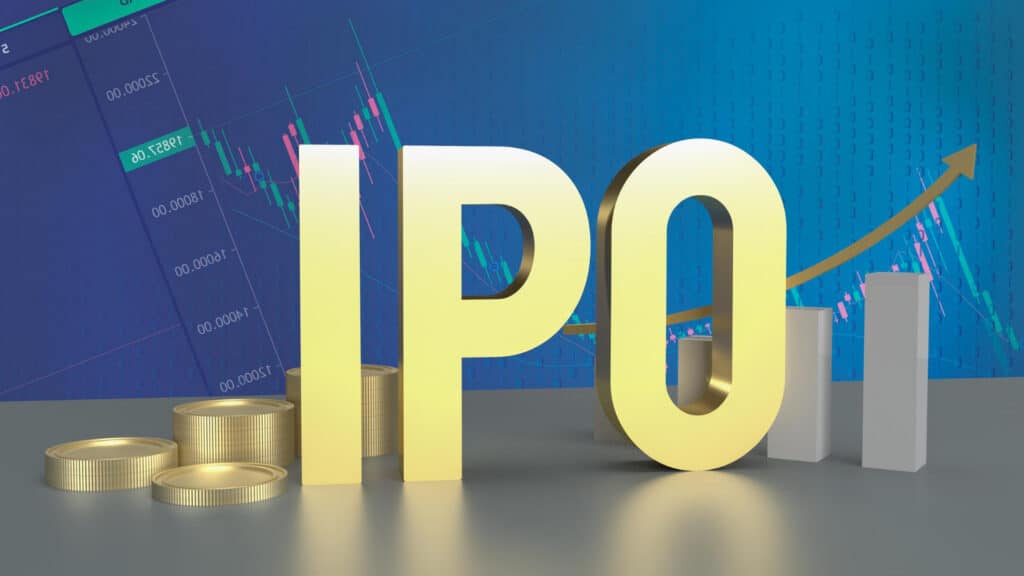The buzz around TruAlt Bioenergy’s Initial Public Offering (IPO) has been impossible to ignore. As India continues its aggressive push toward renewable energy and sustainable fuel alternatives, companies like TruAlt Bioenergy are suddenly finding themselves in the spotlight. But here’s the million-dollar question that’s keeping potential investors awake at night: Is the TruAlt Bioenergy IPO worth your hard-earned money?
Let’s cut through the noise and dive deep into what makes this IPO tick, what the grey market is telling us, and whether this bioenergy player deserves a spot in your investment portfolio.
What Exactly Is TruAlt Bioenergy?
Before we jump into IPO specifics and grey market premiums, let’s understand what TruAlt Bioenergy actually does. This isn’t just another renewable energy company riding the green wave—it’s a specialized player in the bioenergy sector with a focused business model.
TruAlt Bioenergy operates in the compressed biogas (CBG) and bio-CNG space. Think of it as converting agricultural waste, municipal solid waste, and other organic materials into usable fuel that can power vehicles and industrial operations. In a country like India, where agricultural waste management is a persistent challenge and fuel import bills drain foreign reserves, this business model addresses multiple problems simultaneously.
The company has strategically positioned itself to capitalize on India’s ambitious target of establishing 5,000 CBG plants by 2024-2025 under the Sustainable Alternative Towards Affordable Transportation (SATAT) scheme. This government backing isn’t just symbolic—it represents a massive market opportunity that’s only beginning to unfold.
Breaking Down the TruAlt Bioenergy IPO Details
The TruAlt Bioenergy IPO opened for subscription with considerable fanfare, and the numbers tell an interesting story. Here’s what potential investors need to know:
- Issue Size and Price Band: The IPO consists of a fresh issue along with an offer for sale by existing shareholders. The price band has been carefully calibrated to reflect both the company’s current valuation and future growth prospects. While specific numbers fluctuate based on final regulatory approvals, the issue size positions TruAlt among the mid-sized IPOs in the renewable energy sector.
- Subscription Period: The IPO remained open for the standard three-day subscription window, giving retail investors, high net-worth individuals (HNIs), and institutional investors ample time to evaluate and participate.
- Lot Size and Minimum Investment: The lot size has been structured to make the IPO accessible to retail investors while ensuring meaningful participation. This democratized approach aligns with SEBI’s push toward broader retail participation in primary markets.
- Listing Timeline: Following the subscription period, the basis of allotment was finalized, and shares are expected to list on both BSE and NSE, providing liquidity from day one.

Understanding IPO GMP: The Grey Market Whispers
Now, let’s talk about the elephant in the room—the Grey Market Premium (GMP). For those unfamiliar, the grey market is an unofficial market where IPO shares are traded before they officially list on stock exchanges. Think of it as a parallel betting market that gives us early signals about market sentiment.
The TruAlt Bioenergy IPO GMP has been a topic of intense discussion among investment circles. Grey market premiums fluctuate based on multiple factors—overall market sentiment, sector performance, company fundamentals, and sometimes pure speculation.
What Does the GMP Tell Us?
A positive GMP suggests that grey market participants believe the stock will list above its issue price. A negative or zero GMP indicates skepticism about listing gains. However—and this is crucial—GMP is not a guaranteed predictor of listing performance. It’s simply one data point among many that sophisticated investors consider.
For TruAlt Bioenergy, the GMP has shown interesting movements throughout the subscription period. Initial indications suggested moderate interest, which evolved as institutional participation became clearer. Market veterans will tell you that GMPs in the renewable energy sector tend to be volatile, influenced heavily by policy announcements, crude oil prices, and broader market conditions.
The GMP Reality Check
Here’s something most articles won’t tell you: grey market trading is illegal in India. Yes, you read that right. While it exists and provides useful sentiment indicators, participating in grey market transactions carries legal risks. Smart investors use GMP as informational input, not as a trading opportunity.
Subscription Status: Reading Between the Lines
The subscription numbers for TruAlt Bioenergy IPO paint a fascinating picture of investor appetite. Breaking down the subscription by category reveals the real story:
- Retail Investors: This category represents individual investors bidding for up to ₹2 lakhs worth of shares. Retail subscription rates often indicate ground-level sentiment and can be a powerful signal. Oversubscription in this category suggests strong grassroots confidence in the company’s prospects.
- High Net-Worth Individuals (HNIs): The HNI category, covering applications above ₹2 lakhs, often shows the most dramatic oversubscription numbers. These investors typically have access to research and advisory services, making their participation particularly noteworthy.
- Qualified Institutional Buyers (QIBs): This category includes mutual funds, insurance companies, and foreign institutional investors. QIB subscription is often considered the most significant indicator because these entities conduct thorough due diligence before committing capital.
The overall subscription multiple gives us a sense of demand relative to the shares on offer. A heavily oversubscribed IPO doesn’t automatically mean guaranteed listing gains, but it does indicate strong interest across investor categories.
The Business Case: Why TruAlt Bioenergy Matters
Let’s move beyond numbers and examine the fundamental business proposition. What makes TruAlt Bioenergy potentially interesting from an investment perspective?
The Renewable Energy Tailwind
India’s commitment to achieving net-zero emissions by 2070 isn’t just an environmental pledge—it’s a massive economic restructuring that will create winners and losers. Companies positioned at the intersection of waste management, energy production, and sustainability have structural tailwinds that could last decades.
The compressed biogas market in India is still in its nascent stages. Current production meets only a fraction of potential demand. As more CBG plants come online and distribution infrastructure expands, early movers like TruAlt could establish competitive advantages through scale, technology, and partnerships.
Revenue Model and Unit Economics
TruAlt Bioenergy’s revenue streams come from selling CBG to various customers, including automotive fuel retailers, industrial users, and potentially power generation companies. The unit economics depend on feedstock costs (agricultural waste, municipal waste), processing efficiency, and selling prices linked to natural gas benchmarks.
What makes this interesting is the waste-to-value proposition. Agricultural waste that would otherwise be burned (causing air pollution) or left to decompose gets converted into revenue-generating fuel. This circular economy model has both environmental and economic merits.
Government Support and Policy Framework
The SATAT scheme offers guaranteed offtake arrangements for CBG producers, reducing market risk significantly. This government backing provides revenue visibility that’s rare in nascent industries. Additionally, various subsidies and incentives for setting up CBG plants improve project economics.
However, dependence on government policy can be a double-edged sword. Policy changes, subsidy rollbacks, or shifting priorities could impact the business model. This policy risk is something every investor in this space needs to acknowledge.
Financial Performance: The Numbers Behind the Hype
Any serious investment decision demands scrutiny of financial performance. For TruAlt Bioenergy, examining revenue growth, profitability margins, debt levels, and return on capital employed gives us the hard facts behind the marketing narrative.
- Revenue Trajectory: Has the company demonstrated consistent revenue growth? More importantly, is this growth driven by operational scale-up or simply price increases?
- Profitability and Margins: Is TruAlt actually making money, or is it still in investment mode with future profitability promises? Operating margins in the bioenergy sector can be tight, especially during the initial years when capital intensity is high.
- Capital Expenditure and Debt: Building CBG plants requires significant upfront investment. How is TruAlt financing this expansion? High debt levels aren’t necessarily problematic if the assets generate adequate returns, but they do increase financial risk.
- Cash Flow Generation: This is perhaps the most important metric. Does the company generate positive operating cash flow, or is it consistently burning cash? Companies with negative cash flow depend on external financing for survival—a precarious position.

Risk Factors: What Could Go Wrong?
Every investment carries risks, and being upfront about them is crucial for making informed decisions. Here are the key risks associated with investing in TruAlt Bioenergy:
Technology and Operational Risks
Biogas production involves complex biological and chemical processes. Plant efficiency, feedstock consistency, and equipment reliability all impact profitability. Any operational hiccups could affect production and revenues.
Feedstock Availability and Pricing
The business model depends on consistent access to affordable feedstock. Competition for agricultural waste (from other uses like cattle feed or composting) could increase input costs. Supply chain disruptions could impact operations.
Regulatory and Policy Changes
What the government gives, it can take away. Changes to subsidies, offtake guarantees, or environmental regulations could materially impact the business model.
Market Competition
As the sector grows, more players will enter. Established energy companies with deeper pockets could disrupt the competitive landscape. First-mover advantages erode over time.
Valuation Risk
Is the IPO priced fairly, or does it already price in years of perfect execution? Comparing TruAlt’s valuation multiples with listed peers and global comparables provides perspective on whether you’re paying a reasonable price.
Expert Opinions and Analyst Views
What are market experts saying about the TruAlt Bioenergy IPO? While specific recommendations vary, several themes emerge from analyst reports:
- Sector Outlook: Most analysts remain positive on the renewable energy sector’s long-term prospects, particularly segments like biogas that address multiple challenges simultaneously.
- Company-Specific Concerns: Questions about execution capability, management track record, and competitive positioning often feature in cautious assessments.
- Valuation Debate: This is where opinions diverge most sharply. Some analysts believe the pricing is attractive given growth prospects; others worry about overpaying for an early-stage company.
- Listing Gain vs. Long-Term Hold: Some recommendations differentiate between applying for potential listing gains versus holding for the long term. These can be very different investment theses.
Should You Apply? A Framework for Decision-Making
Rather than giving you a simplistic “yes” or “no,” let’s build a framework for making this decision based on your specific circumstances:
If You’re Looking for Listing Gains
This is essentially a short-term trading bet. Consider:
- Grey market premium trends
- Overall market sentiment
- Subscription levels across categories
- Recent IPO listing performance
If these align favorably, there’s a reasonable probability of listing gains. However, remember that listing pops are never guaranteed, and you could face immediate losses.
If You’re Looking for Long-Term Investment
This requires deeper analysis:
- Do you believe in the renewable energy thesis for India?
- Does TruAlt’s specific business model and execution capability inspire confidence?
- Is the valuation reasonable compared to the potential growth trajectory?
- Can you stomach the volatility and risks associated with an early-stage company?
Long-term investors should focus less on GMP and more on business fundamentals and sector dynamics.
Portfolio Fit and Risk Tolerance
Be honest about your risk tolerance. Early-stage companies in evolving sectors can deliver spectacular returns, but they can also wipe out capital. What percentage of your portfolio can you afford to allocate to high-risk, high-reward opportunities?
Comparison with Peers: Putting TruAlt in Context
How does TruAlt stack up against listed companies in the renewable energy and biofuel space? While direct comparables might be limited given the specific focus on CBG, examining companies like Praj Industries, Thermax, or even broader renewable players provides context.
- Valuation Multiples: How do TruAlt’s price-to-earnings, price-to-sales, or EV/EBITDA ratios compare with established peers? Are you paying a premium for growth, or does the valuation seem reasonable?
- Growth Rates: Is TruAlt growing faster than peers? Does its market opportunity justify a higher valuation?
- Operational Metrics: Compare capacity utilization, operating margins, and return ratios across companies to gauge relative efficiency and profitability.
The Bigger Picture: India’s Energy Transition Story
Stepping back from TruAlt specifically, it’s worth considering the broader context. India is undergoing an energy transition that will unfold over decades. This transition encompasses solar, wind, green hydrogen, biofuels, energy storage, and grid modernization.
Investing in this transition isn’t about picking the single winner—it’s about building exposure to a mega-trend through a diversified approach. TruAlt might be one piece of a broader renewable energy allocation in your portfolio rather than a concentrated bet.
The companies that ultimately succeed will be those that execute well, adapt to changing market conditions, secure feedstock and offtake agreements, manage finances prudently, and navigate regulatory environments effectively. Time will tell which category TruAlt falls into.
Frequently Asked Questions
What is the TruAlt Bioenergy IPO GMP?
The Grey Market Premium (GMP) for TruAlt Bioenergy fluctuates based on unofficial trading before listing. GMP indicates potential listing gains but is not guaranteed. It’s one sentiment indicator among many and should not be the sole basis for investment decisions.
Is TruAlt Bioenergy IPO worth investing in?
This depends on your investment goals, risk tolerance, and belief in the renewable energy sector. The company operates in a promising sector with government support, but it’s early-stage with execution risks. Evaluate based on your specific circumstances rather than following herd mentality.
What does TruAlt Bioenergy do?
TruAlt Bioenergy converts agricultural waste, municipal solid waste, and other organic materials into compressed biogas (CBG) and bio-CNG. This renewable fuel can power vehicles and industrial operations, addressing both waste management and energy needs.
When will TruAlt Bioenergy shares list on the stock exchange?
Following the subscription period and allotment process, shares typically list within a week. Check official announcements from the company and stock exchanges for exact listing dates on BSE and NSE.
How can I check my TruAlt Bioenergy IPO allotment status?
Visit the registrar’s website (mentioned in the IPO prospectus) or check through BSE/NSE IPO allotment status pages using your PAN number or application number. Links are typically provided on the exchange websites.
What are the risks of investing in TruAlt Bioenergy IPO?
Key risks include operational challenges in biogas production, feedstock availability and costs, regulatory and policy changes, intense competition, execution capability of management, and valuation risk if the stock is overpriced relative to growth prospects.
What is the minimum investment required for TruAlt Bioenergy IPO?
The minimum investment equals the lot size multiplied by the issue price. This information is specified in the IPO prospectus and varies by company. Retail investors can apply for one lot or multiples thereof.
How does TruAlt Bioenergy compare to other renewable energy companies?
TruAlt focuses specifically on compressed biogas, differentiating it from solar or wind energy companies. Its competitive position depends on operational efficiency, feedstock costs, offtake agreements, and execution capability compared to peers in the bioenergy space.
Final Thoughts: Making Your Decision
The TruAlt Bioenergy IPO represents an opportunity to gain exposure to India’s growing bioenergy sector at an early stage. The company operates in a space with genuine environmental benefits, government support, and long-term growth potential.
However, it’s also an investment in an early-stage company operating in a nascent industry with numerous execution risks. The grey market premium might suggest short-term gains, but sustainable value creation will depend on fundamentals, not speculation.
If you’re applying, do so with realistic expectations and an understanding of the risks involved. Don’t invest money you can’t afford to lose, especially in IPOs of companies without long operational track records.
For those who believe in India’s renewable energy story and have the risk appetite for early-stage investments, TruAlt might deserve consideration as part of a diversified portfolio. For conservative investors seeking stable returns, this might not be the right fit.
Whatever you decide, base your decision on thorough research, honest assessment of your financial situation, and independent judgment rather than following herd behavior or relying solely on grey market signals.
The renewable energy transition is real, and companies positioned to capitalize on it could deliver significant returns. Whether TruAlt Bioenergy is one of those companies will become clear in the months and years ahead. For now, evaluate it as you would any investment—with careful analysis, realistic expectations, and appropriate position sizing.




